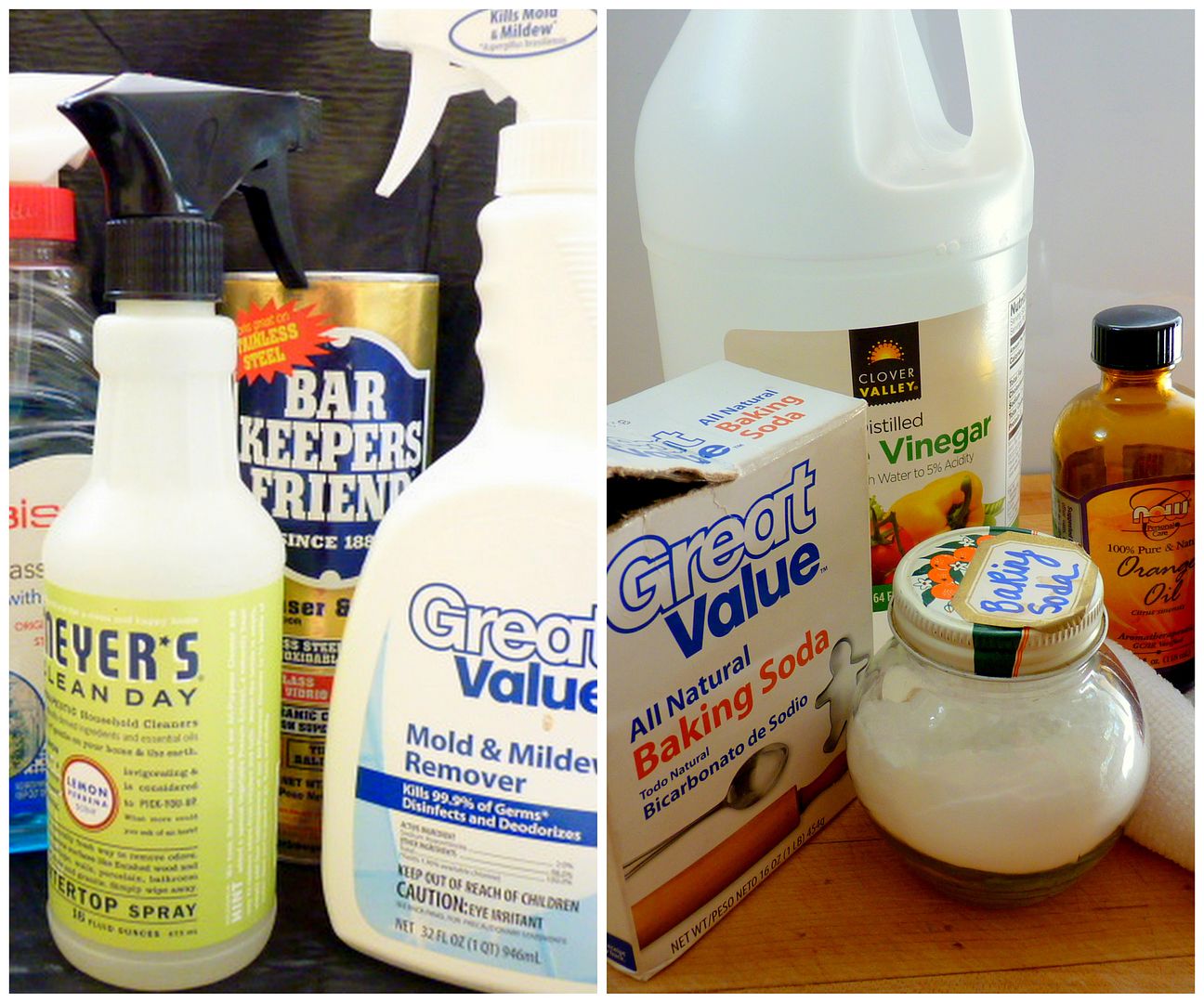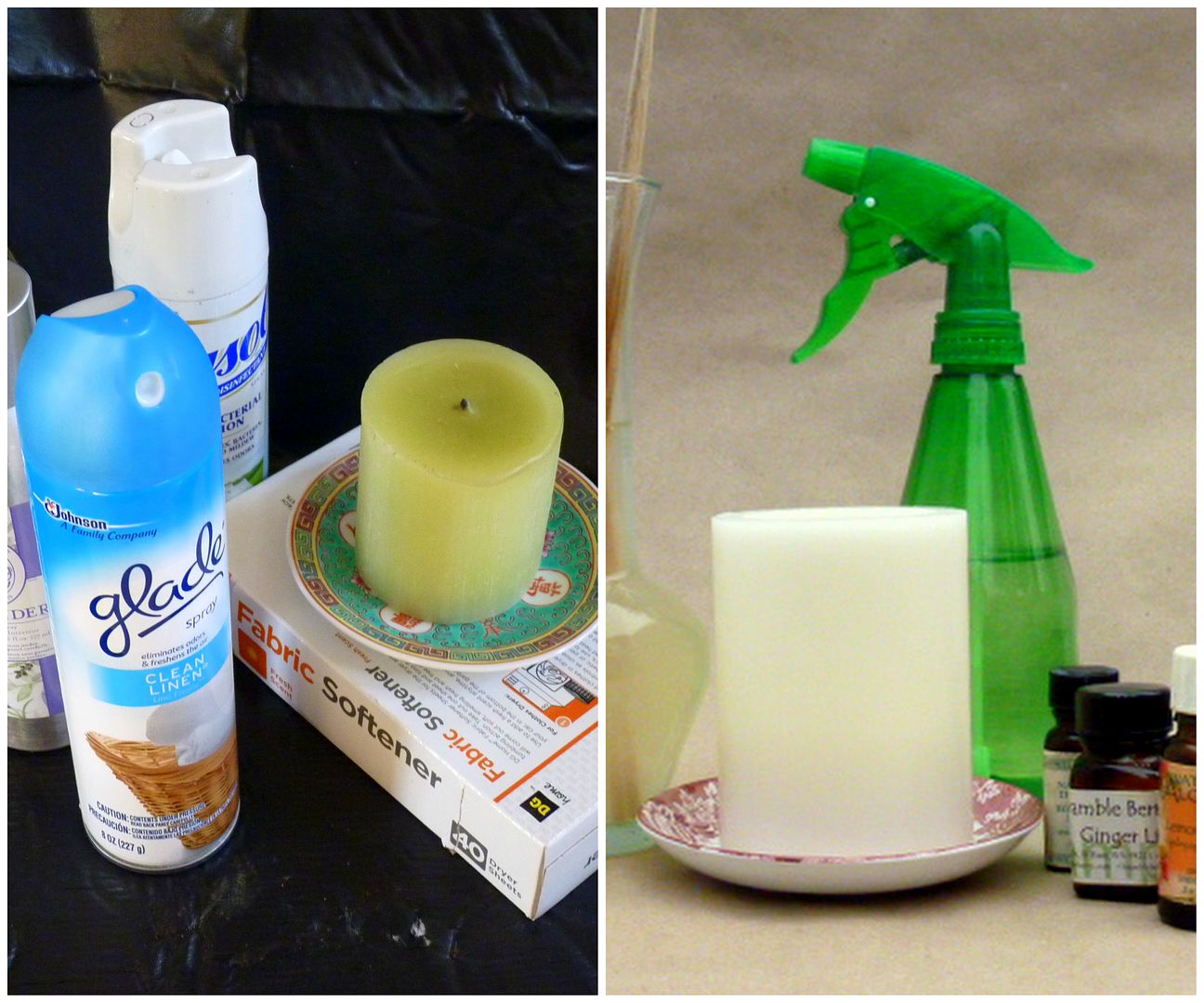 |
| Do you know what's in your home fragrances? It's fun, frugal, and healthier to make your own. Try a scented spray, a lime pomander, your own diffuser, and my citrus and salt potpourri. |
If your home is for sale, it better smell good!
Sanitation and ventilation usually take care of these problems. But most of us like to add another fragrance, whether it's an air freshener, a room atomizer, or scented candles. Department stores develop their own signature fragrances to get you in the mood for buying, so why not you?
The problem is almost all these manufactured scents create health problems.
Artificially scented products like the ones I mentioned, as well as soaps, laundry detergents, spray cleaners, toilet bowl cleaners, pesticides, preservatives, plastics, and a host of other ordinary items, contain what’s called endocrine disruptors.
An endocrine disruptor is a naturally occurring or man-made chemical that either acts like or blocks the hormones of your internal endocrine system. These false hormones are called xenoestrogens and the list of conditions they create is long: early puberty, lessened female fertility, endometriosis, cancer, and other disturbances to your nervous system, immune system and reproductive system.
An endocrine disruptor is a naturally occurring or man-made chemical that either acts like or blocks the hormones of your internal endocrine system. These false hormones are called xenoestrogens and the list of conditions they create is long: early puberty, lessened female fertility, endometriosis, cancer, and other disturbances to your nervous system, immune system and reproductive system.
You can see why it’s important to know where you’ll run across these pretender hormones. They can enter our bodies through our skin, the air we breath, and the foods we eat.
You may already know about these ingredients and their effects on the body. If so, please help me spread the word. Rather than fostering paranoia, let’s all look for ways to rid our lives of these toxic chemicals. It’s important.
You may already know about these ingredients and their effects on the body. If so, please help me spread the word. Rather than fostering paranoia, let’s all look for ways to rid our lives of these toxic chemicals. It’s important.
It’s especially important if you are a woman. And even more so if you are pregnant or could become pregnant.
Here’s How to Start
- Read labels. Check for fragrance ingredients. Manufacturers are not required to list all chemical additives by name. The only acceptable fragrance should be “essential oil.”
- Avoid plastics. Store and cook food in glass or stainless. Avoid non-stick cookware. Microwave in glass or ceramic. Use a fabric instead of a plastic shower curtain. Don't handle new plastic products that have a strong chemical aroma.
- Don't touch. Don’t handle the thermal receipt a store gives you. Instead, ask the cashier to place it in your shopping bag. Wash your hands after handling one.
- Skip the canned goods. Buy fresh or frozen foods so you can limit exposure to BPA in can linings. Favor organic foods.
- Filter water. It’s better than drinking spring water that’s been stored in plastic bottles.
- Go natural. Use natural insecticides. Purchase unscented bath, beauty, laundry and cleaning products. Do it yourself. Make your own air fresheners and cleaners.
Easy Formulas
Yes, you can create home remedies to replace the nasty but necessary home care products you count on. Read labels of "green products," and if you still don't like what you see, turn to DIY.
Yes, you can create home remedies to replace the nasty but necessary home care products you count on. Read labels of "green products," and if you still don't like what you see, turn to DIY.
Natural air freshener: Cut orange in half. Scoop out pulp (the part you would eat), and reserve the pulp and the remaining half orange for another use. Rub inside of empty orange half with 2 teaspoons salt. Place in pretty bowl and set where it will scent the room.
Natural oil diffuser: Combine 3 parts mineral oil, 2 parts vodka or gin, and 1 part essential oil of your choice. Pour into container with narrow neck (the neck reduces evaporation). Insert reeds and invert the reeds every few days. Use the same formula minus the mineral oil to make an air freshener spray.
It's not true that natural essential oils won't bother chemically sensitive people -- people who might be coming to view your home on the market. To be safe, keep the scents in your home on the light side, never overwhelming.
Call to Action
This post is not a go-green-or-die proclamation. Instead it’s a call to increase our awareness of environmental toxins, so that we can make changes to improve and protect our own and our family’s health.
Will I still bring out the Bar Keeper’s Friend to treat a rust spot that nothing else can tackle? And resort to Lime-Away to deal when hard water stains build up? Probably. But I’ll limit my exposure as much as possible. I’ll ventilate, wear gloves, use sparingly, and continue to search for substitutes
Links That Help
My research unearthed numerous support sources. We are not alone! Here are some sites that will give you details and encouragement.
If you majored in chemistry, check the Wikipedia listing http://en.wikipedia.org/wiki/Endocrine_disruptor
If you are a teacher, check http://www.niehs.nih.gov/health/topics/agents/endocrine/
If you’d like a quick overview specifying the dangers of endocrine disruptors and what you can do to avoid them, go to http://www.nrdc.org/health/effects/qendoc.asp
If you are pregnant and want advice from a doctor, try http://nurtureparenting.com/pregnant-and-pre-polluted-eight-choices-for-a-cleaner-womb/
If you want a quick list to the dirty dozen endocrine disruptors check http://www.ewg.org/research/dirty-dozen-list-endocrine-disruptors
If you need a list of health ratings for common health and beauty products, the best one is http://www.ewg.org/skindeep/
If you want concise recipes for making your own cleaning products, visit http://eartheasy.com/live_nontoxic_solutions.htm
If you want to read what Glamour Magazine told women to do, read
If you are into making your own bath and beauty products (great as gifts!) you’ll find recipes here http://wellnessmama.com/5801/7-ingredients-20-diy-beauty-recipes/
If you like making your own air fresheners, try those at
http://www.designsponge.com/2012/11/small-measures-natural-room-spritz.html
http://www.designsponge.com/2012/11/small-measures-natural-room-spritz.html
If you want to know the post I like best for making diy air fresheners, it’s http://www.thankyourbody.com/homemade-air-freshener/
If you want to buy reed diffuser sticks, you can get them from Yankee Candle http://www.yankeecandle.com/flameless/reed-diffuser/reed-sticks
And from Amazon
If you want to choose from a major list of quality essential oils, order from http://www.mountainroseherbs.com/index2.php
Don't forget to order my $5 eBook, DIY Home Staging Tips to Sell Your Home Fast and for Top Dollar. If you are selling a home, it will take you through the steps that make a difference!What's Your Story?
In today’s world we can’t eliminate all the things that compromise our health, but we can certainly reduce our exposure to them. I’m renewing a pledge to myself to substitute real fragrances and fresh air for chemical derivatives. I hope you’ll join me.
In today’s world we can’t eliminate all the things that compromise our health, but we can certainly reduce our exposure to them. I’m renewing a pledge to myself to substitute real fragrances and fresh air for chemical derivatives. I hope you’ll join me.
What will be the artificially scented product most difficult for you to give up? And how can you find an acceptable replacement?






No comments:
Post a Comment